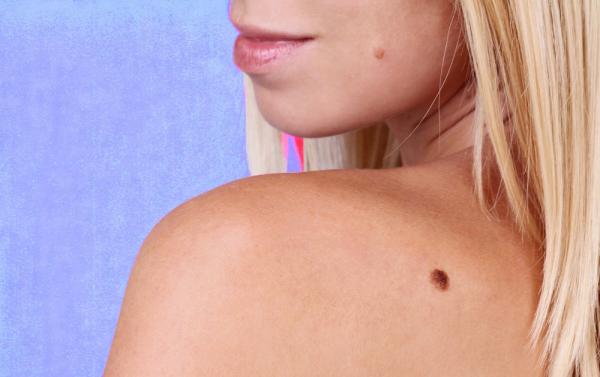
According to the Skin Cancer Foundation, it is estimated 76,380 new cases of severe melanoma will be diagnosed in the U.S. this year- of those diagnoses an estimated 10,130 people will die from skin cancer.
Skin cancer is easily identified as an unusual mole, unhealed sore, blemish or mark that has any noticeable flesh change with size, shape or color. Several people have moles and most are nearly harmless. But it is imperative individuals constantly check their marks for any drastic or noticeable changes that could signify melanoma or skin cancer.
According to the American Cancer Society, here is what you can do to watch out for melanoma:
1. Follow the ABCDE rule to identify any possible cancerous moles
Asymmetry
: Look for only a portion of your mole or birthmark to be transformed or affected by a change of color or texture.
Border
: Look for the outer edges of the mark to be protruding, irregular, jutting out or disheveled.
Color
: Look for the mark to contain multiple colors such as: dark brown, black, pink, white, blue and red.
Diameter
: Look to see if the mark is larger than approximately a ¼ inch in size (a pencil eraser).
Evolving
: Look to see if the mark is constantly changing in shape, color and size.
2. New spot that is changing in size, shape or color
If a new growth appears and is constantly changing in size and color alert your physician.
3. Look for the ugly duckling mole (one that doesn't look like the other)
It is completely normal for an individual to have birthmarks and moles. Generally, moles on a person's body are fairly similar, but if you notice one mole that is not like the others, alert your doctor.
4. A cut or sore that does not heal properly
5. Redness and severe swelling around the border of the mole (puffiness)
6. Mole's surface changes- scales, puss infested and bloody
7. A change in mole sensation- itchiness, pain, irritation and tenderness
If any of these signs or symptoms occurs, alert your doctor immediately.
To help guard you and your family from the painful and damaging effects of skin cancer, follow these 9 simple tips:
1. Seek the shade
Avoid the harmful UV rays between 10 a.m. and 4 p.m. when the sun is beating down the hardest.
2. Do not feel the burn
Burns are not good for skin. Some harmful side effects of severe burns include: headaches, nausea, blistering, pain and vomiting. These side effects are more severe and common within children.
3. Stay away from tanning beds
The year-round golden tan may sound tempting but fight the urge and stay away. According to the International Agency for Research on Cancer, tanning beds emit such high levels of UV radiation the machines had to be moved into the highest cancer risk category, "carcinogenic to humans." Do not pay for skin cancer.
4. Cover up
Cover your face with long-brimmed hats, sunglasses and use a shawl to cover up your shoulders.
5. Use UVA/UVB sunscreen
Apply a sunscreen with at least 15 SPF or higher every day to ensure protection from the sun's harshest rays.
6. Apply and reapply sunscreen
Reapply every couple of hours to ensure you're covered throughout the day. If swimming or sweating excessively, reapply as needed to cover and protect your skin.
7. Keep newborns and young children out of the sun
Infants and babies should be kept in the shade and lathered in sunscreen at all times to protect their vulnerable and gentle skin.
8. Constantly examine your skin and existing moles
Keep an eye out for changing conditions or new growths.
9. Visit a skin doctor annually
According to the Skin Cancer Foundation, the estimated 5-year survival rate for individuals who catch their melanoma early in the U.S. is approximately 98 percent, and an individual's risk of developing melanoma is reduced by 50 percent when they apply SPF 15 daily.
Taking precautionary steps today will save you and your family from the harmful effects of melanoma in the future.

